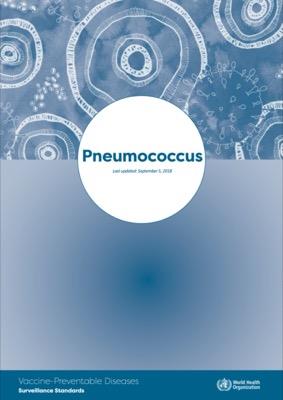Pneumococcus: Vaccine Preventable Diseases Surveillance Standards

Overview
The bacteria Streptococcus pneumoniae (pneumococcus)
is the most frequent cause of severe pneumonia and
pneumonia deaths worldwide. Pneumococci frequently
asymptomatically colonize the human nasopharynx,
particularly in children. The bacteria can spread
contiguously to cause otitis media and sinusitis, be
aspirated to cause pneumonia or invade normally sterile
sites to cause sepsis or meningitis. Morbidity and
mortality for serious pneumococcal disease is highest in
children and the elderly. Case fatality rates can be high
for invasive pneumococcal disease, ranging up to 20%
for sepsis and 50% for meningitis in developing
countries.
It is estimated that in 2008, 541,000
HIV-negative children < 5 years of age died
from pneumococcal disease (1). Development of
pneumococcal resistance to commonly used antibiotics,
such as penicillins, macrolides, cephalosporins and cotrimoxazole, is a serious problem in some parts of the
world. While most pneumococcal disease is sporadic,
large outbreaks of meningitis, usually serotype 1,
have occurred in the African meningitis belt. Smaller
outbreaks occur in crowded settings (daycare centers,
homeless shelters, etc.).
